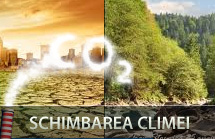http://green.blogs.nytimes.com/2012/06/25/a-new-satellite-tool-tracks-deforestation/
An international team of researchers presented a new tool at the Rio+20 sustainability conference last week: the first satellite system for monitoring deforestation across Latin America in nearly real time. While such programs have existed in Brazil for several years, the program, called Terra-i, fills a much-needed gap for some smaller Latin countries that are losing forests at an equal or higher rate.
"Everyone more or less understands maps," said Mark Mulligan, a geographer at King's College London and one of the project's designers. "Having dynamic maps that show where forest loss is occurring is more effective than statistics you always hear about - 'we've lost another patch of forest the size of Wales.' " Now, he said, people can visualize exactly where and how quickly that forest was felled, including which towns or protected areas that it lay near.
The project is a collaboration, involving Dr. Mulligan; a graduate student, Louis Reymondin; the International Center for Tropical Agriculture in Colombia; the Nature Conservancy; and the School of Engineering and Management of Vaud in Switzerland.
Using NASA's Modis satellite sensor, it depicts land changes every 16 days at a resolution of 250 square meters (about 2,700 square feet) on the ground. The constantly updated maps are freely available online as a simple overlay on a Google map or formatted for more sophisticated Web mapping software. "People familiar with Google Maps can just look down at their own areas," Dr. Mulligan said. "And we provide the data so others who have methods for manipulating geodata can actually do further things with the data than we've done."
Preliminary results revealed that the effects of deforestation in parts of Colombia has more than quadrupled, increasing by 340 percent since 2004. Over a million hectares (2.5 million acres) of forest have been felled in Paraguay's Gran Chaco region. "I think the Gran Chaco results are quite surprising - there's much greater deforestation than we expected," Dr. Mulligan said.
For Terra-i to work, the researchers had to train the system to differentiate between seasonal changes in vegetation and human-induced impacts. They developed a computational neural network and taught the program to recognize those changes with old data from 2004 to 2005.
Brazil in particular was a good starting point for teaching the machine, since large swaths of land often change from all-forest to no-forest. From there, the scientists are refining the system to distinguish between visual obstacles like cloud cover and flooded rivers and to home in on more sporadic deforestation.
In many parts of the world, the details of what's being cut where and when are splotchy, making managing a given patch of forest - let alone an entire country's holdings - tricky. Dr. Mulligan and his colleagues hope the new tool will aid governments, conservationists and those drafting climate-related policies to accurately assess landscape changes and will help with makings decisions - how to balance livelihoods and food security with biodiversity conservation, for example, or how to design more eco-efficient agriculture.
Now that monitoring for Latin America is up and running, the team is working on systems for Asia and Africa. Those areas are proving more challenging, though: forests there often occur in disconnected patches rather than one green blanket, and deforestation tends to be carried out by small-scale individual operations rather than large-scale corporations.
Still, they are working on methods to improve their algorithms so they can better function in an African or Asian context. They are also brainstorming on ways to bolster their computing power, since continuously running an analysis of each pixel of data taken every 250 square meters on the continental scale is "hugely computationally intensive," Dr. Mulligan said.
The Rio+20 attendees and others seemed to respond favorably to Terra-i's debut, Dr. Mulligan said, with the Web site logging around 2,300 hits on the first day of the conference. "The best way improve a system is to get people to use it," he said, although so far most people have just taken a quick look. "It takes time for people to come back after figuring out, O.K., now what can I do with it?"





